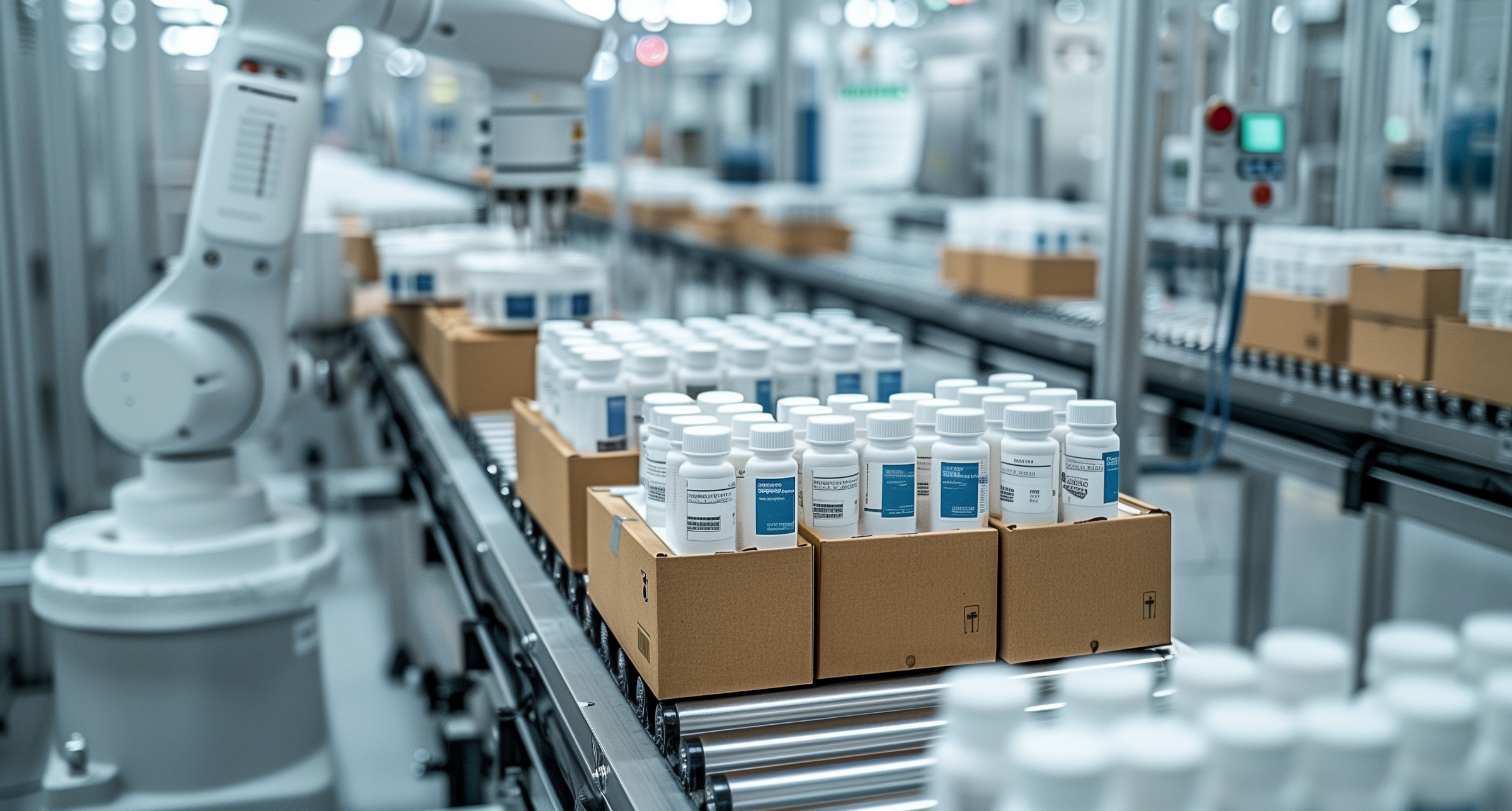Top Priorities for Pharma Packaging Professionals
In an overall theme that matches perfectly with the much wider life sciences sector, those who work within pharmaceutical packaging – either contract or in-house – must balance multiple, constantly changing priorities.

As the provider of vital serialization and pharma track and trace solutions for packaging clients across the world, advanco takes the time and trouble to truly understand these priorities.
Why do we do this? The insights generated are essential to enable us to truly understand how we can add measurable business value. Without understanding their priorities, we cannot deploy the solutions to solve them.
As there are many issues, and for the sake of brevity in this analysis, let us provide a very broad overview of the most common issues facing pharma packaging professionals today.
- Regulatory Compliance
Adherence to regulatory standards is arguably the single biggest ongoing, and constantly changing, pressure that packaging professionals need to solve.
This involves ensuring medicinal packaging meets all relevant international and local regulations, such as those set by the FDA, EMA, and other regulatory bodies. The task is made harder simply because regulations often change quickly, and new amendments are introduced. A lack of awareness, or a lack of understanding provides no excuse – if a manufacturer fails to comply, operations could be stopped. Even if operations are allowed to continue, severe legal consequences, including fines, sanctions, and lawsuits, could be financially devastating and harm a company’s reputation.
It is easy to understand why regulations are so stringent – fake medicines kill and harm many thousands of people across the globe every year. Therefore, compliance with regulatory standards builds trust among consumers and healthcare providers, as it assures them of the quality and safety of the medications. Pharmaceutical companies that consistently meet regulatory requirements maintain a good reputation in the market, which is critical for business success.
A solid pharmaceutical serialization and track and trace provider will always maintain the latest regulatory insights and will be happy to advise accordingly.
- Product Protection and Safety
Maintaining the integrity and stability of the product itself is a vital part of any packaging process.
Get it wrong, and the valuable drugs inside, whether they are tablets, capsules, liquid or even compressed air in the case of asthma products, will at best be wasted, and at worst could involve a costly recall of products, wherever they are in the supply chain. Not only will this involve a substantial monetary cost, but the reputational damage could also be far worse.
Therefore, all packaging must protect the product from physical damage, environmental factors such as moisture, light, oxygen, and from contamination.
One solution is to ensure the latest, tamper-proof features are enabled that indicate if the product has been tampered with, ensuring consumer safety.
- Sustainability
As in just about every industry, sustainability is now a vital component of the life sciences and pharmaceutical sector – with product packaging especially important.
The use of eco-friendly components, including biodegradable, recyclable, or reusable materials to reduce the environmental impact of pharmaceutical packaging, is becoming essential. Additionally, it is important for packaging professionals to look at how they can reduce the waste generated from the packaging process.
It is easy to understand why this is the case. Companies are increasingly held accountable for their environmental impact. Sustainable packaging will often align with the broader CSR goals of pharmaceutical manufacturers, improving the company’s image and fostering trust among consumers and stakeholders. Additionally, investors, partners, and customers often prefer companies with strong environmental and sustainability records, influencing their investment and purchasing decisions.
On a related note, sustainable packaging often involves using safer, non-toxic materials, which is crucial for products that come into direct contact with medicines, ensuring patient safety. Furthermore, it mostly reduces pollution and emissions, contributing to a healthier environment, which indirectly supports public health.
It is also worth noting there is a growing consumer demand for environmentally friendly products. Sustainable packaging appeals to this demographic, enhancing brand reputation and customer loyalty. Companies that prioritize sustainability can differentiate themselves in a crowded market, gaining a competitive advantage.
- Cost Efficiency
Cost efficiency in medicine packaging is not just about reducing expenses; it is about optimizing the entire production process to ensure high-quality, compliant, and sustainable packaging solutions.
This efficiency supports the industry’s goals of safety, accessibility, and profitability, all while maintaining a competitive edge in a tightly regulated and highly competitive market.
The medical industry faces constant pressure to reduce healthcare costs. Cost-efficient packaging helps control the overall expenses of medical products, making them more accessible. Furthermore, the global nature of the pharmaceutical market means all companies must be cost-efficient to compete with international players.
Cost-efficient practices also allow for greater flexibility to innovate and adapt to market changes without significantly increasing costs. They can additionally enhance product appeal and consumer satisfaction by ensuring that products are safe, intact, and easy to use.
Solid cost efficiency similarly correlates directly with many practical aspects of the packaging sector. For example, it usually leads to better inventory management, reducing storage costs and minimizing the risk of stockouts or overstock situations. Properly designed packaging also reduces the space required for storage and transportation, lowering shipping costs.
- Innovation and Technology Integration
We work in a pharmaceutical industry powered by technology – and the packaging side is no exception.
Smart packaging is making big inroads, incorporating technologies such as QR codes, NFC tags, or RFID for better product tracking, patient engagement, and anti-counterfeiting measures.
Technology can also enable the creation of smart packaging that reminds patients to take their medication or tracks adherence, something that is becoming increasingly important as technology continues to evolve. For example, pill bottles with digital timers or packaging that connects to apps can improve patient compliance. Innovations in packaging design can make it easier for patients, especially the elderly or those with disabilities, to access and use their medications correctly.
Technology can also be a direct enabler of point number five above – sustainability. It allows the development of sustainable materials that are biodegradable or recyclable, reducing the environmental impact of medical packaging. Innovative manufacturing processes can also minimize waste and energy usage, contributing to more sustainable operations.
- Supply Chain Management
Maintaining a “big picture” awareness of the entire supply chain is a necessity for all parts of the chain to function at its peak performance.
Advanced supply chain management systems integrate various stakeholders, including suppliers, manufacturers, and distributors, improving communication and coordination. Access to real-time data allows for better decision-making and quicker response times to any issues that arise. Advanco wholeheartedly agrees with this approach – we have long argued that increased cooperation is a vital part of the ongoing success of the overall pharmaceutical sector.
Maintaining an overall competitive advantage is also a natural result of watertight supply chain management processes. Utilizing the latest technologies can streamline operations and provide a competitive edge. An agile supply chain can quickly respond to market trends and demands, allowing companies to stay ahead of competitors.
It is also important to note that effective supply chain management ensures that packaging materials and finished products are handled in a way that prevents contamination, maintaining the integrity and safety of medicines.
Many medicines require specific temperature conditions. Most vaccines, such as the influenza vaccine, MMR (measles, mumps, and rubella) vaccine, and COVID-19 vaccines (like Pfizer-BioNTech and Moderna), need to be stored at low temperatures, often between 2°C and 8°C. Insulin, used for diabetes management, typically needs to be kept refrigerated until it is opened. Once opened, it can usually be kept at room temperature for a limited period, usually around 28 days.
Another example is monoclonal antibodies, used for various conditions, including cancers and autoimmune diseases. Products like trastuzumab (Herceptin) and adalimumab (Humira), are temperature sensitive and typically need refrigeration.
A well-managed supply chain ensures that these conditions are maintained throughout the transportation and storage processes, preserving the efficacy of the drugs.
Conclusion
From the overview provided, addressing the priorities faced by packaging professionals requires a multidisciplinary approach.
This will involve very close collaboration between packaging engineers, regulatory experts, sustainability officers, and other stakeholders – especially serialization solutions providers – who are able to devise the technology that is needed.
There will always remain a need to develop comprehensive solutions that meet the evolving demands of the pharmaceutical industry – therefore all parties need to cooperate and work together to design these solutions.
VIEW THE ORIGINAL ARTICLE HERE



